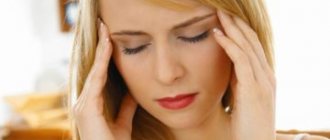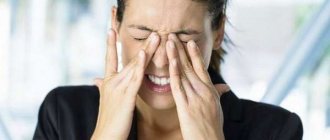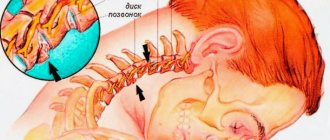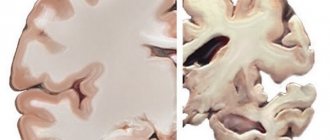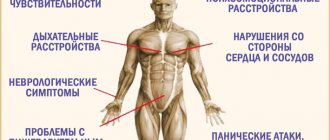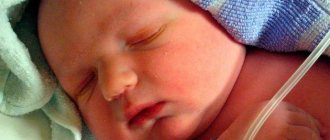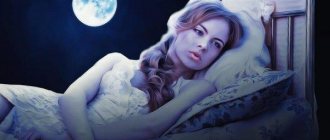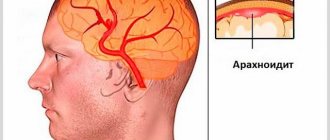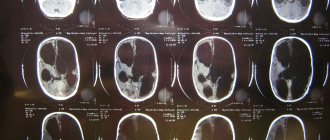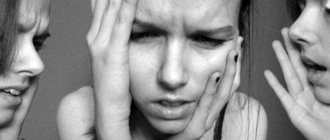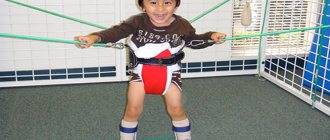Triptans are drugs based on serotonin agonists, which selectively act on certain serotonin (5-hydroxytryptamine) receptors. This group began to be developed in the 90s of the 20th century specifically to combat migraine.
Triptans are used for migraines both with and without aura. Take the drug at the time of headache.
The mechanism of action of triptans is aimed both at relieving pain during an attack and at eliminating the symptoms associated with migraine. Directions of action:
- narrowing of cerebral blood vessels, as a result, relief of a painful attack, while these drugs have practically no effect on other vessels;
- the drugs have an anti-inflammatory effect - they reduce swelling that puts pressure on the nerve endings, which also reduces pain;
- have a depressing effect on the excited trigeminal nerve - this reduces its pain sensitivity.
What are the advantages of migraine medications triptans - they act quickly, relieve pain and symptoms, they can be used in different age groups, there are also disadvantages - the price of the drugs is quite high (like lunch in a restaurant), not everyone can take triptans for health reasons.
It should not be used by patients with coronary heart disease, malignant hypertension and people with blood clots. The entire spectrum of action of triptans on the human body has not been thoroughly studied; clinical trials are still being conducted.
There are two groups of triptans: first and second generations.
Rules for taking medications
A large number of drugs are produced annually on the pharmaceutical market that have an analgesic effect of varying degrees of severity. However, there is no one remedy that will instantly relieve migraine pain. This is due to the fact that the pathogenesis of this disease is complex and not fully understood, and there are a huge number of trigger factors that can cause an attack.
Migraine treatment is a complex process that includes a competent approach to the choice of medications. There is a list of rules that will help to properly relieve migraine symptoms:
- The treatment regimen is prescribed by a specialist. You cannot self-diagnose migraine and self-medicate. This is a serious disease that requires a competent approach;
- It is better to prevent a headache attack than to try to stop it. To do this, you need to try to avoid those factors or situations that can provoke migraine pain. These may be certain foods, strong noise or bright light, stress, unpleasant odors, physical activity and others;
- Taking analgesics is effective only in the first two hours after the onset of an attack. If you take the pill later, the chance of getting the expected result is minimal;
- You should not try to endure the attack. At the beginning of the disease, the body itself tries to cope with pain by activating its reserves. But as migraine progresses, these reserves are depleted, and the effect of therapy weakens.
The treatment regimen is prescribed by a specialist individually depending on the stage of the disease and the characteristics of the body. Therefore, it is dangerous to self-medicate or deviate from prescribed therapy.
Groups of drugs and treatment regimens
All migraine tablets can be divided into groups. There are drugs that are aimed exclusively at relieving migraine pain - triptans. This is a group of drugs for specific treatment.
For nonspecific treatment, nonsteroidal anti-inflammatory drugs and analgesics are prescribed. Antiemetics (metoclopromide), magnesium sulfate, and dexamethasone are used as symptomatic therapy.
Depending on the severity of the disease, several stages of therapy are distinguished. Each of them has its own combination of drugs and serves a specific purpose.
First stage
Migraine treatment begins with high doses of analgesic. It may be combined with an antiemetic drug. Large doses are prescribed to ensure maximum absorption of the active substance. It may be impaired due to gastrostasis, which often accompanies migraine attacks.
Most often, aspirin (acetylsalicylic acid) is used for this in a dose of 1000 mg (2 tablets of 500 mg). Alternatively, you can take ibuprofen, naproxen, or diclofenac.
You can enhance the analgesic effect of the drugs if you take them with caffeine-containing drinks, for example, strong tea, Americano or strong cocoa.
In order to stimulate the motility of the gastrointestinal tract and accelerate the movement of drugs through the intestinal tube, motilium is additionally prescribed. It has a peripheral effect, i.e. affects the intestines directly.
Second stage
As the disease progresses, doctors prescribe triptans. These are migraine pills that act directly on serotonin receptors.
There are several generations of triptans, but the mechanism of action is the same for all. These drugs promote constriction of cerebral vessels, reduce the sensitivity of the trigeminal nerve, and also significantly reduce the likelihood of a relapse of an attack. These medications should only be taken in case of a migraine attack.
Despite the fact that the mechanism of action of all triptans is the same, the active substance and dosage must be selected individually for each patient. You can be completely confident in the effectiveness of the chosen drug only after three attacks that have been prevented.
Triptans can also be taken with medications that improve gastrointestinal motility.
Third stage
Treatment of migraine involves a combination of triptans with various analgesics. This is the third stage of therapy, which is used in the most extreme cases.
The most commonly used combination is analgin with sumatriptan. To speed up the effect, you can also use prokinetics and take the analgesic with caffeine-containing drinks.
Triptans
Triptans are migraine medications that are derivatives of serotonin. They belong to specific therapy drugs and are used exclusively for migraine attacks.
There are several generations of triptans:
- The most famous and studied is sumatriptan. It belongs to the first generation drugs and acts exclusively on serotonin receptors;
- Second generation triptans have a central and peripheral mechanism of action. They reduce the conduction of pain impulses at the level of the spinal cord (central mechanism of action) and at the periphery - in the region of the trigeminal nerve. This group includes drugs based on naratriptan, zolmitriptan, and rizatriptan.
Despite the fact that second-generation drugs have a wider range of effects, doctors successfully use sumatriptan-based migraine tablets in their practice. It enters the bloodstream faster and reaches its “points of application.” In this regard, the effect of taking the drug occurs earlier than when using second-generation triptans. Reviews of drugs in this group are mostly positive.
The drugs are available in various forms - tablets, injection solutions, rectal suppositories.
The list of triptans is quite large. All of them are used for migraines with and without aura. Doctors recommend taking them directly when a headache occurs.
Second-generation triptans are not prescribed for the relief of attacks of basilar and ophthalmoplegic migraine.
Combined products
Combination medications are also used to treat migraines. They are prescribed at the third stage of treatment. These include migrenol, excedrin, caffetin and others.
These medicines contain analgin or ergot alkaloid, caffeine, codeine and other active substances. At the same time, the undoubted advantage of these drugs is that they are sold without a prescription, unlike triptans.
Doctors recommend that people suffering from frequent migraine attacks refrain from uncontrolled use of these medications. Combined drugs, when taken frequently and unreasonably, can cause abuse headaches (pain due to abuse of analgesics), contribute to the transition of acute pain into chronic pain, and in some cases themselves provoke a migraine attack. Also, during severe attacks, they do not bring the expected effect.
| Tradename | Compound | Indications | Side effects | Price |
| Migrenol | Paracetamol Caffeine Excipients | Various pain syndromes: headache, menstrual, rheumatic, dental, migraine. | Allergic reaction, dizziness, nausea, vomiting, Lyell's syndrome, agranulocytosis. | 170 rub. |
| Kaffetin | Codeine Propyphenazole Paracetamol Caffeine | Toothache, migraine, menstrual pain, neuralgia, post-traumatic pain. | With long-term use, leukopenia; nausea, vomiting, increased psychomotor irritability, allergic reactions. | Up to 215 rub. |
| Caffeamine | Caffeine Ergotamine | Migraine, arterial hypertension. | Increased psychomotor excitability, insomnia, tremor; from the cardiovascular system - palpitations, pain in the heart area; allergic reactions. | 60 rub. |
| Solpadeine | Caffeine Codeine Paracetamol | Various pain syndromes, migraines, colds. | Nausea, vomiting, dizziness, sleep disturbance, allergic reactions, gastrointestinal motility disorders. | Up to 150 rub. |
| Excedrin | Acetylsalicylic acid Caffeine Paracetamol | Pain syndromes of various etiologies, migraine, algodismenorrhea | Allergic reactions, nausea, vomiting, epigastric pain, leukopenia, agranulocytosis. | Up to 260 rub. |
Combination drugs for the treatment of migraine that contain non-steroidal anti-inflammatory drugs should be taken with caution. They have a detrimental effect on the gastric mucosa, causing irritation. If you already have gastritis or ulcers, they can provoke an exacerbation of these diseases.
Classification of drugs
Migraine is a disease that has been known to mankind since the time of Hippocrates. Even then, people were looking for which medicine would be most effective. However, the development of medicine during the time of Hippocrates was significantly lower. Today, compared to ancient times, there are many ways to overcome migraine attacks.
There are three groups of drugs used in the treatment of migraine, namely:
- Symptomatic.
- Abortive.
- Preventive.
Symptomatic medications
This group is intended to combat the accompanying manifestations of migraine (nausea, vomiting, general painful condition).
As a rule, symptomatic drugs depress the central nervous system, calming it and eliminating the discomfort caused by its excitement.
List of effective drugs in this group:
- phenergan (this drug has an antiemetic effect and can also act as a sleeping pill);
- compazine (depresses the central nervous system, helps stop gag reflexes and nausea);
- Thorazine (a potent sedative that depresses the central nervous system);
- diacarb (promotes the removal of fluid from the body).
Preparations for prevention
Drugs from several groups are used as prophylactic agents to prevent an attack.
Good reviews about beta-blockers (metaprolol, propranolol). The dose of these drugs is selected individually for each patient. The mechanism of action is based on the similar pathogenesis of migraine and hypertension. Beta blockers prevent cerebral vasoconstriction and possibly affect serotonin receptors.
In order to prevent a migraine attack that is associated with menstruation, a woman needs to take one of the non-steroidal anti-inflammatory drugs a couple of days before she starts. Before use, you should consult your doctor.
Tricyclic antidepressants are also used to prevent migraine attacks. They are popular among neurologists and have good reviews. Antidepressants not only help prevent an attack, but also improve the patient’s general condition and normalize his mood.
How to get rid of migraines without pills
Non-drug treatment of migraine helps only at the beginning of an attack and in cases where the pain is not severe and does not lead to disruption of the patient’s life. If possible, you should lie down in a quiet, darkened room and try to sleep. At a minimum, you should drink black tea with sugar and lemon and rest a little.
To defeat migraines at an early stage, you can:
- arrange a contrast shower for your head, but temperature changes should not be sudden;
- hold your head in a bowl of very warm water for a while;
- put on a shirt soaked in cold or warm water on the upper part of the body (the water temperature depends on the situation and is selected experimentally);
- Massage of the head or feet can be used as a cure for migraines;
- Menthol ointment will help you relax - rub it into your temples and wrap your head tightly with a towel.
It is important to remember that self-medication can aggravate the condition, accelerating the development of an attack. It should be used with the permission of the attending physician, using already proven methods.
Head massage
Carrying out the manipulation on your own will not give the desired effect; it is better to use the services of an assistant. The work begins with stroking the head, neck and shoulders. Then a finger massage of the entire scalp is performed from the forehead to the back of the head. In this case, the pressure should be insignificant, the head should be fixed with the other hand. Next, the side areas are treated - from the temple to the back of the head. Be sure to massage the tubercles behind the ears. The session ends with stroking.
You can learn more about massage techniques here.
Therapeutic baths for migraines
Physiotherapy will not help overcome migraines, but they will quickly alleviate the patient’s condition. From time to time they are recommended to be used for preventive purposes, but you should not get carried away. Using the product too often can trigger attacks.
Options for combating migraines with baths:
- with mustard flour - dilute a heaping tablespoon of the mixture with very warm, but not hot water to form a porridge. Add it to water at a temperature of 39-40°C. Session time – 5-10 minutes or until the skin turns red;
- with mustard seeds and sage – take the ingredients in equal quantities and mix. Dilute 60 g of the composition in 2 glasses of cold water and leave for half an hour. Strain, add to bath;
- with mustard oil – add 10 drops of oil to a glass of water, shake the mixture. Pour the preparation into the bath.
The listed baths do not have to be taken completely. Hand and foot baths help just as quickly. At the same time, they cause less discomfort and require less hassle. The method will have to be abandoned if there is a fever, skin rashes, or intolerance to the components.
You can learn more about folk methods in the fight against migraines here.
Alternative medicine
Folk remedies for migraines are widely used. Their popularity is explained by the absence of harmful effects on the body of harmful substances. They are effective in the initial stages of the disease.
To treat a migraine attack, infusions of lemon balm, mint, linden, and red viburnum berries are used. It is better to drink them fresh so that the essential oils do not evaporate.
Strong tea or fresh blackcurrant juice are also good for headaches. Some patients claim that potato juice improves their condition and relieves migraine symptoms.
A “contrast compress” can help: place a warm one on the forehead and a cold one on the neck. This helps redistribute blood and relieve spasm.
During pregnancy
Pregnant women often suffer from headaches, and migraines can come on suddenly. This is due to changes in hormonal levels in the body. The disease does not have a negative effect on the body of the unborn child.
With this disease, women are often prescribed the drug Tylenol. This effective remedy can only be used with the permission of a doctor. To relieve painful symptoms, you need to apply a bandage moistened with water to your head.
IMPORTANT! Pregnant women are strictly prohibited from taking any analgesics and anti-inflammatory drugs on their own; during this period it is better to consult a specialist.

